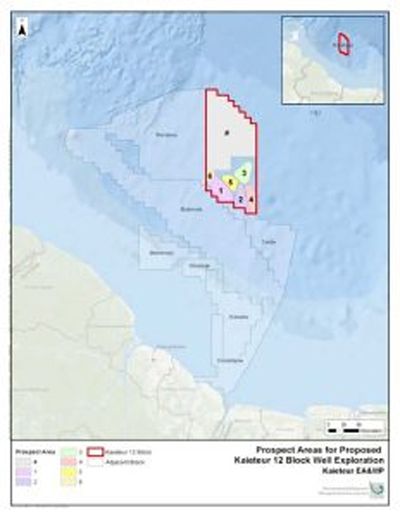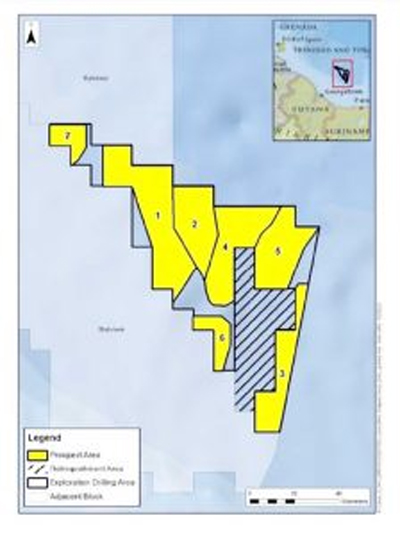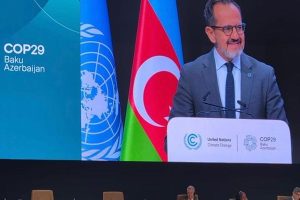
Kaieteur News
GEORGETOWN
EnergiesNet.com 06 15 2022
The Environmental Protection Agency (EPA) will be holding a public hearing at the end of the month at the Roraima Duke Lodge to address appeals submitted with regard to the entity’s decision to forego the need for an Environmental Impact Assessment (EIA) for Esso Exploration and Production Guyana Limited (EEPGL’)s —ExxonMobil Guyana—latest proposed 12-well campaign.
The decision to hold the public hearing has since been communicated by the EPA, and relates to two separate 12-well drilling campaign’s proposed by ExxonMobil Guyana for exploration ventures in the Kaieteur and Canje Oil Blocks.

According to the EPA, the decision was taken in accordance with the Environmental Protection Act, Cap. 20:05, which stipulates that public hearings be conducted into all appeals submitted against the EPA’s decision not to require an EIA for the project.
“The Public Hearing will involve representations from the appellants, the developer, and other key stakeholders,” the EPA notice said.
It was noted that, “thereafter, the EAB (Environmental Assessment Board) will deliberate on the findings and prepare a report with its decision confirming or setting aside the EPA’s decision.”
As it relates to the works proposed for the Canje Block, EEPGL—ExxonMobil Guyana—in its application to the EPA had noted that the drilling of the wells is expected to commence in the 4th quarter of 2022 with the conclusion of the proposed drilling campaign expected by first quarter 2025.
According to ExxonMobil, based on the water depths in the Canje Block, multiple dynamically-positioned drill ships would be used to drill the wells.
“The Canje 12-well Programme aims to gather data on the reservoir characteristics, hydrocarbon presence, pressure, and temperatures. If the presence of hydrocarbons is discovered, wells will be tested to establish the limits of the reservoir,” ExxonMobil said. According to the proposal, once the proposed drilling operations are complete, the exploration well will be permanently plugged and abandoned.

It was noted that the Project will generate hazardous and non-hazardous wastes and as such, “all waste streams for the Project will be managed in accordance with a Comprehensive Waste Management Plan (CWMP) Exploration and Appraisal Drilling proposed for the Canje Block will be similar to previously executed Exploration and Drilling Campaigns undertaken by EEPGL.”
Given the similar nature of the work programme, EEPGL did outline that: “The potential impacts from the project are related to physical, biological, and socioeconomic values.”
The EPA’s screening had found that “there are no significant environmental impacts” but during public consultations held, numerous concerns were raised that must, according to law, be addressed by the regulatory body.
The EPA had said, the project impacts has been deemed to be negligible to low, short-term and localised and as such, an EIA was not required. At the time, the only demand had by the EPA was for EEPGL to prepare an Environmental Management Plan (EMP) to outline the measures that will be put in place to mitigate the impacts associated with the project.
As it relates to the Kaieteur Block, it was noted that based on the water depths in that location, multiple dynamically-positioned drill ships would be used to drill the wells.
“The Kaieteur multi-well programme aims to gather data on the reservoir characteristics, hydrocarbon presence, pressure, and temperatures. If the presence of hydrocarbons is discovered, wells will be tested to establish the limits of the reservoir. Additionally, the productivity of wells and the oil or gas properties present will be tested,” ExxonMobil Guyana said.
That project too, according to ExxonMobil Guyana, will generate hazardous and non-hazardous wastes and that all waste streams for the project will be managed in accordance with a CWMP.
The EPA had found at the time that, “the Project will not have a significant environmental impact, providing all proposed embedded control mechanisms and practices are implemented.”
As such, it was determined by the regulatory body that an EIA was not required, since objected to by members of the public, and this will now have to be addressed.
kaieteurnewsonline.com 06 14 2022












